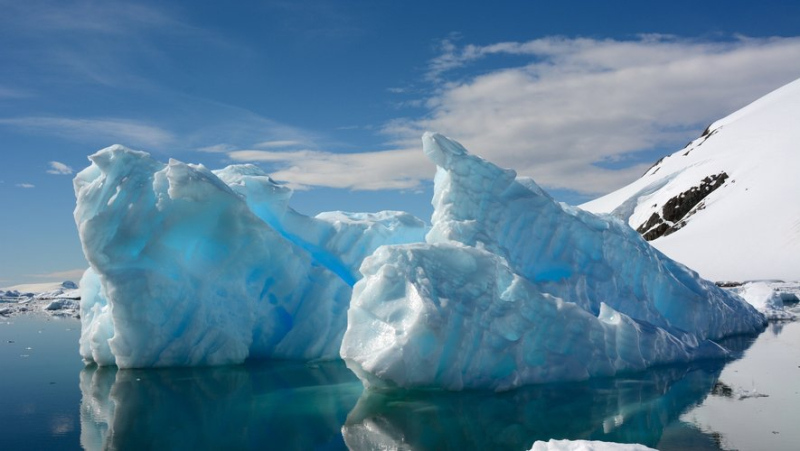Record melting of Antarctic sea ice most likely due to global warming

Global warming due to human activity has had the effect of “multiplying by four” the risk of this phenomenon occurring, which previously only had the chance of occurring “once every two thousand years”. Lucezn/Getty Images
The record melting of the sea ice measured at the start of 2023 in Antarctica would have been "extremely improbable" without global warming, the effects of which are becoming visible on the ice that has surrounded the southern continent for only a few years, according to a study published this Monday, May 20, 2024.
Global warming due to human activity has had the effect of "multiplying by four" the risk to see this phenomenon occur, which previously was only likely to occur "once every two thousand years", estimate scientists from the British Antarctic Survey.
In 2023, the maximum extent of sea ice, which melts in summer and replenishes in winter, was nearly 2 million square kilometers below the average normal winter, a reduction equivalent to four times the surface area of France, recalls the British observatory.
No immediate impact on sea level
This melting has no immediate impact on sea level because the ice floe is formed by freezing the salt water already present in the ocean. But its absence causes the waves to be attacked at the ends of the ice cap – – the gigantic mass that covers Antarctica and contains enough fresh water to cause a catastrophic rise in the oceans if it were to melt.
Furthermore, the white ice floe reflects the sun's rays more than the darker ocean: its disappearance thus accentuates global warming since fewer rays are reflected back towards the ocean. rsquo;space.
Until recently, the extent of Antarctic sea ice was relatively stable, despite strong annual variations. Unlike the North Pole where melting has been very marked since the 1970s.
The beginning of a decreasing trend in Antarctica
But the 2023 record, after 7 successive years of stronger than normal melting, illustrates the start of a decreasing trend in Antarctica too. The possibility of sea ice catching up in the coming years was also analyzed in the study, published in the journal Geophysical Research Letters.
"Even after 20 years, it does not completely return to its original level", told AFP Rachel Diamond, lead author. This means that "the average area of the sea ice around Antarctica could still remain relatively small for decades".< /p>
"The impacts would be profound, including on regional and global weather patterns as well as the unique ecosystems of the Southern Ocean, including whales and penguins", said co-author Louise Sime.
This massive melting led to record mortalities in 2022 and 2023 among the chicks of emperor penguin colonies, due to a lack of sea ice during the summer to support their first steps, the time to develop their waterproof feathers.




